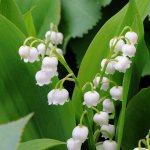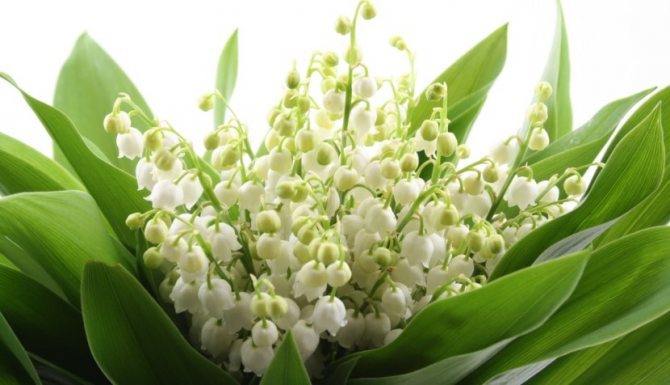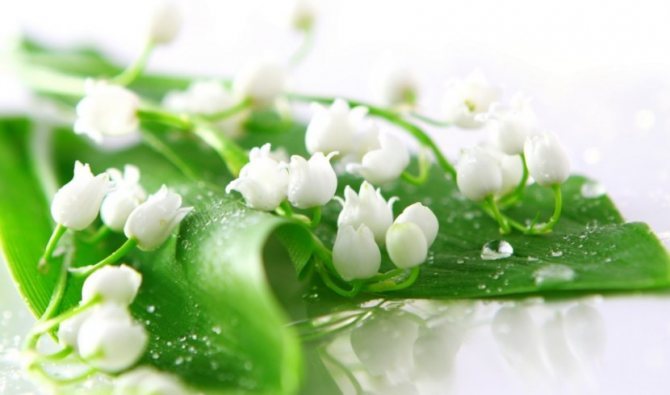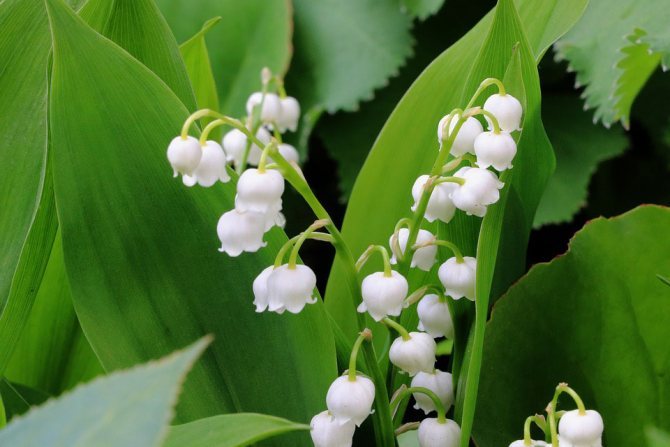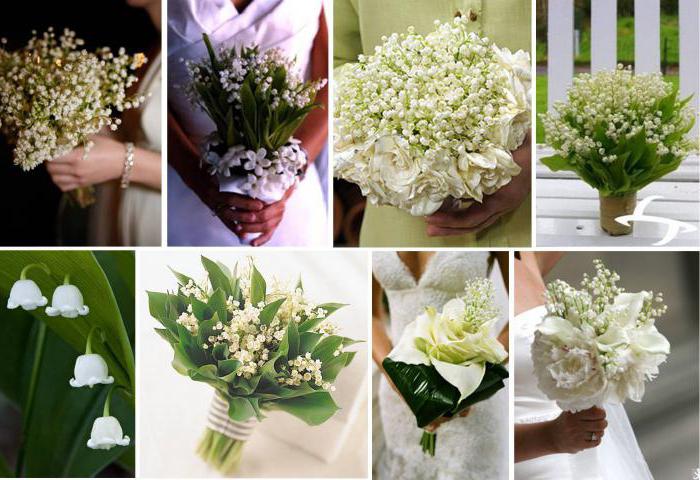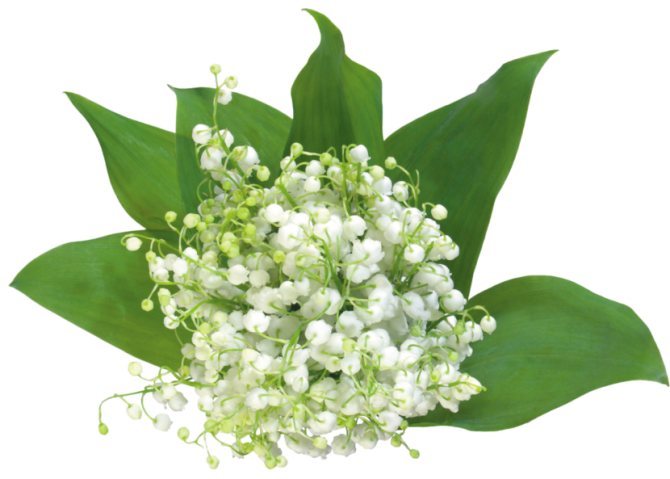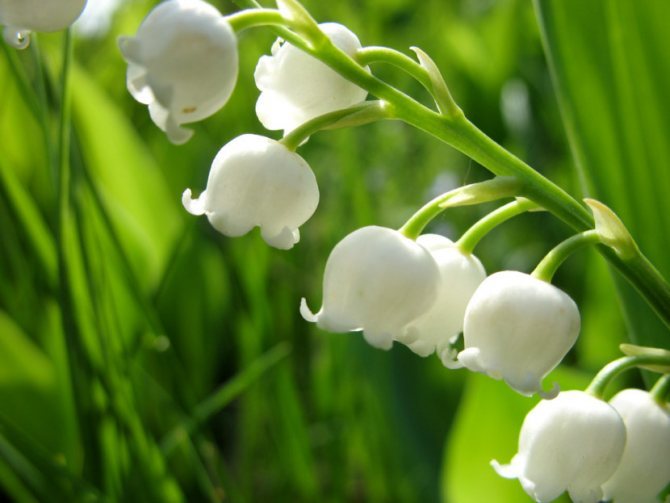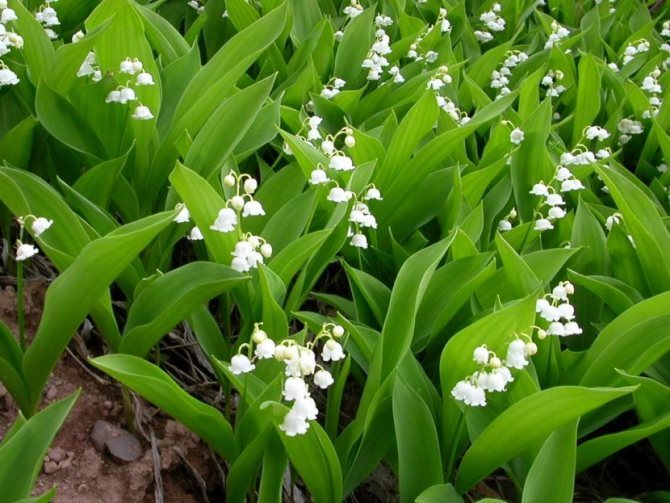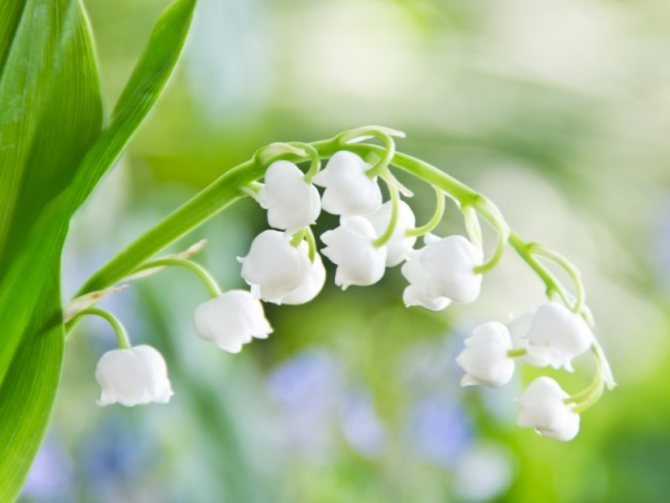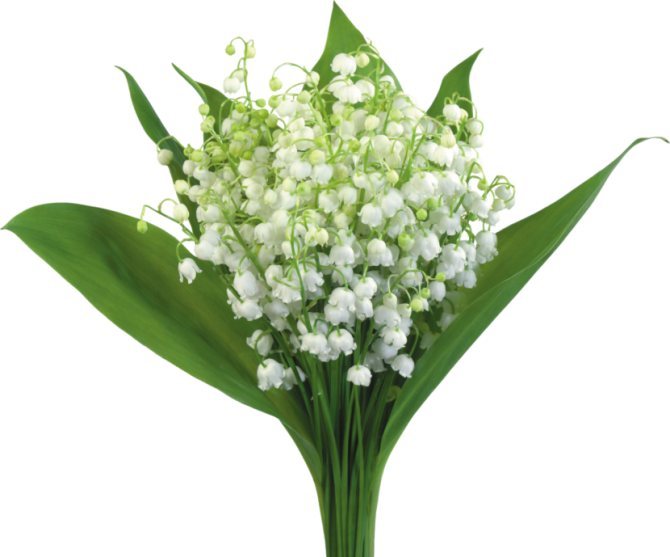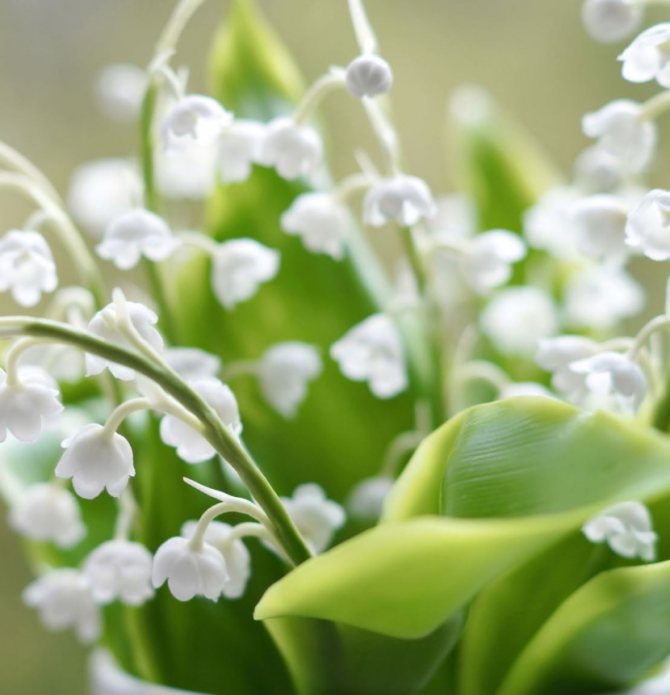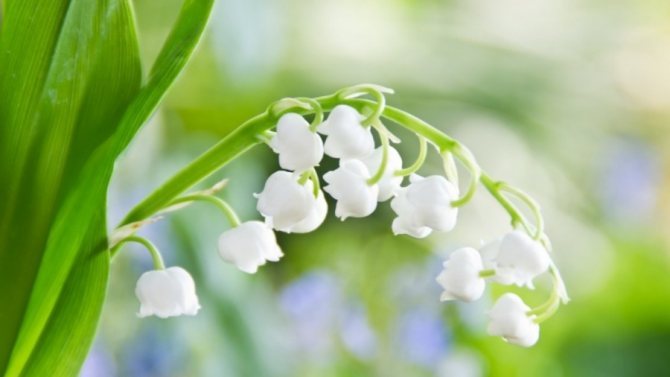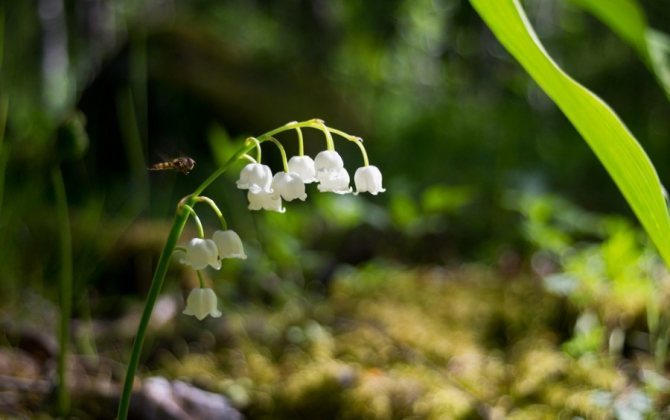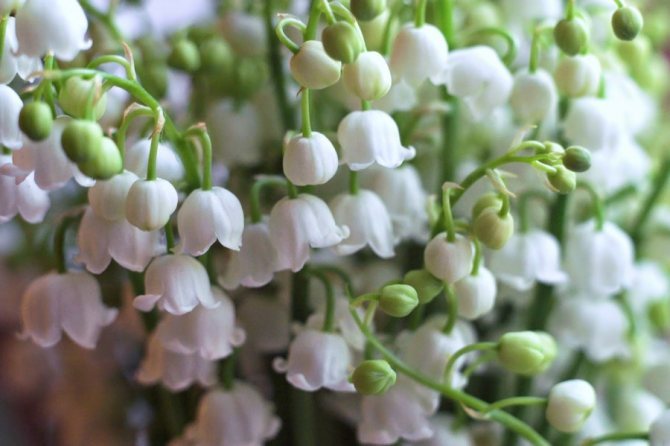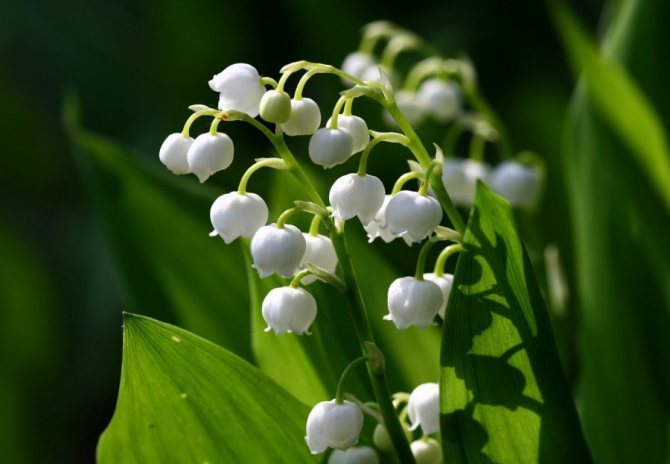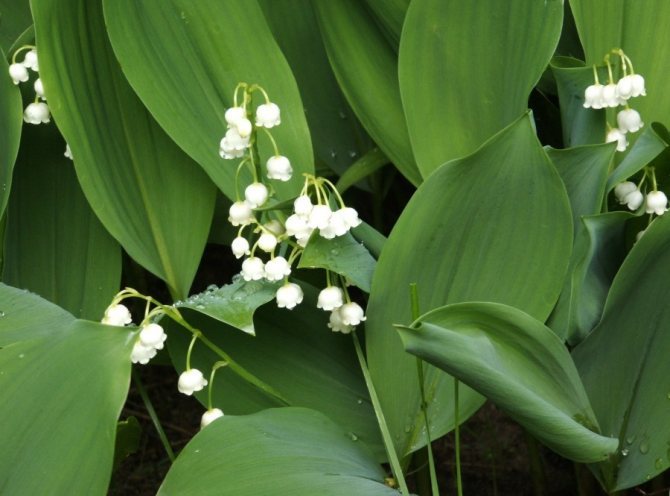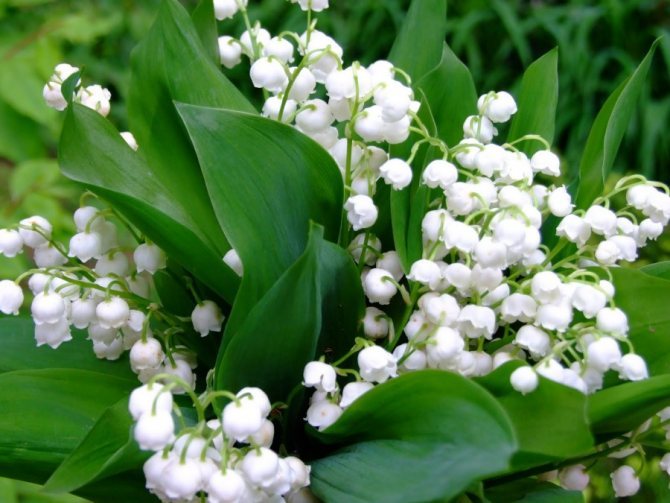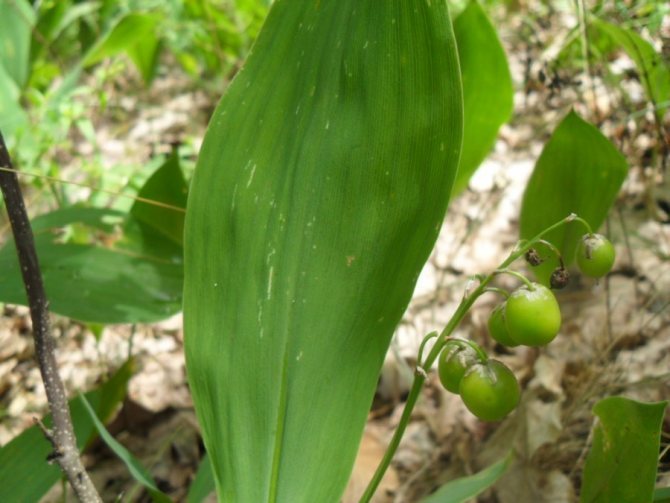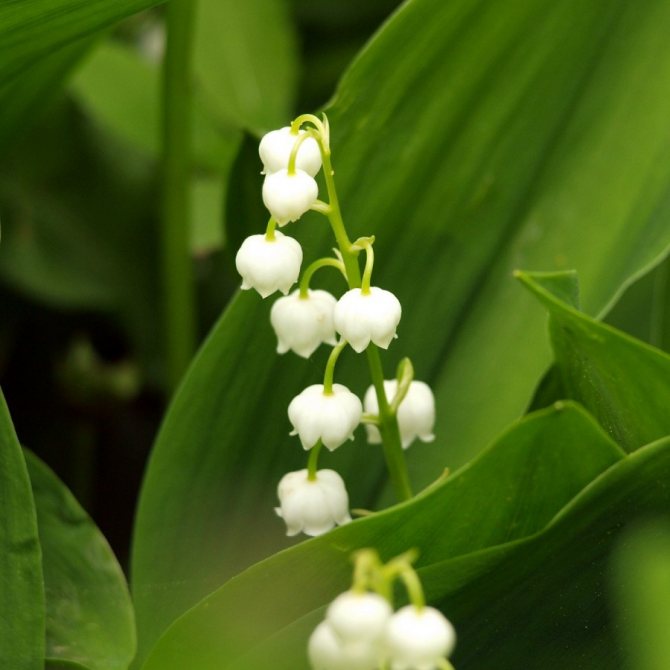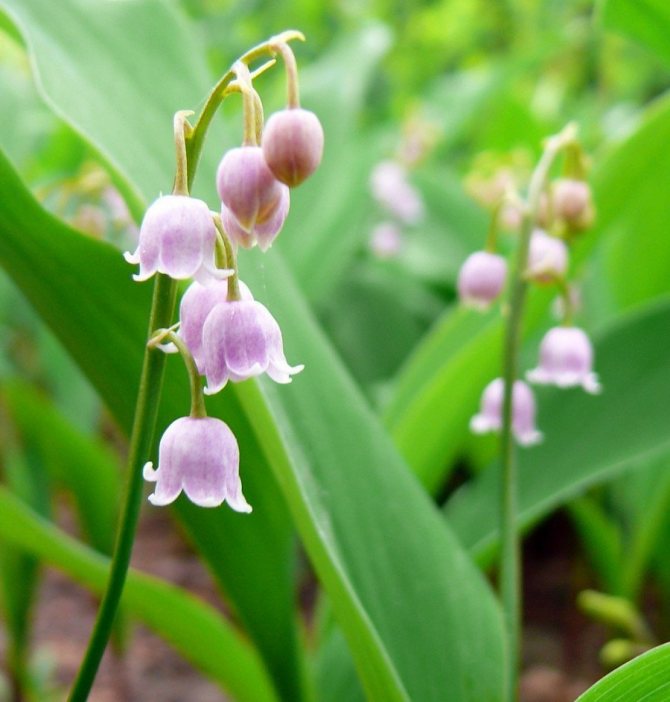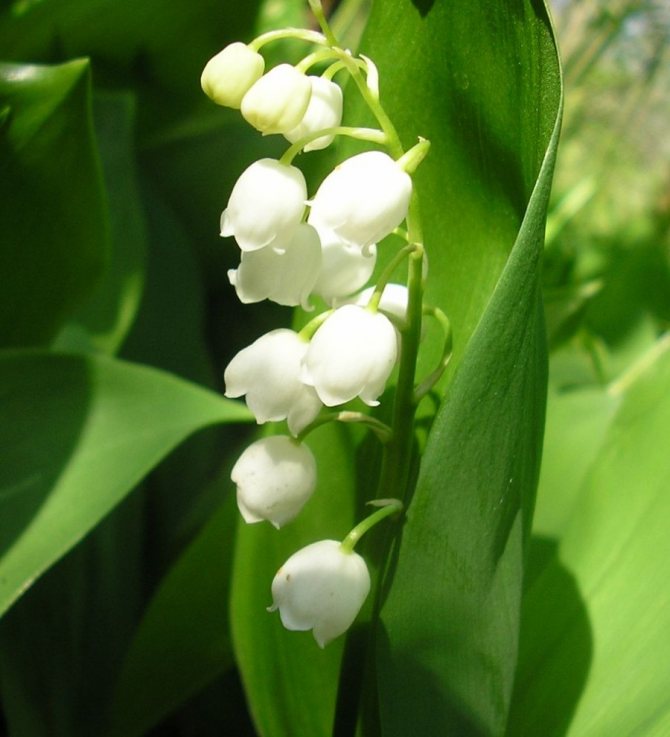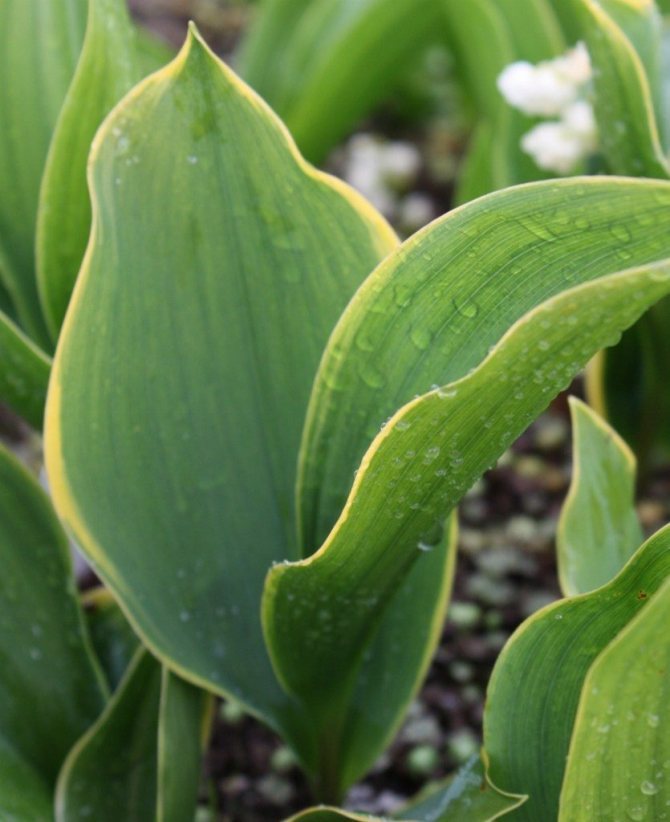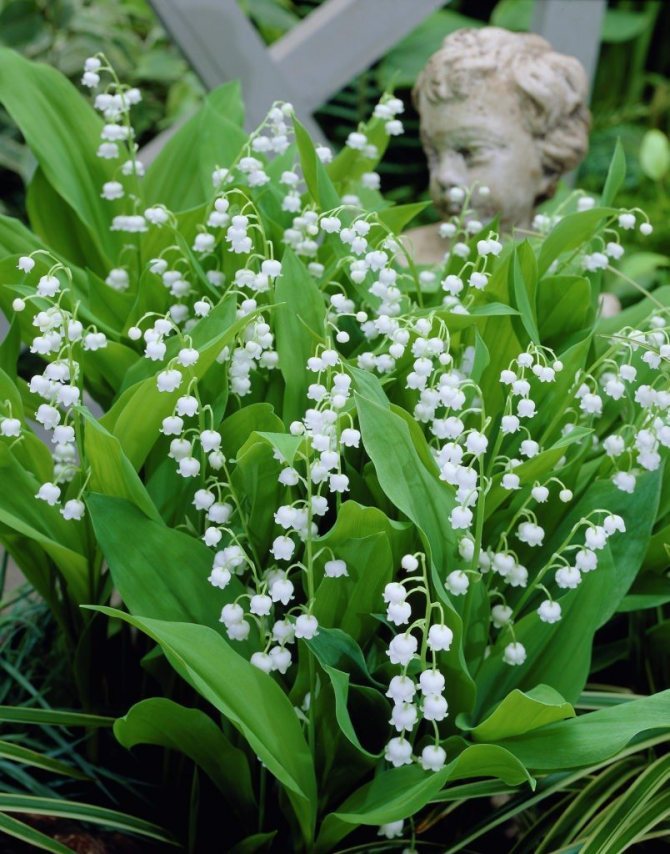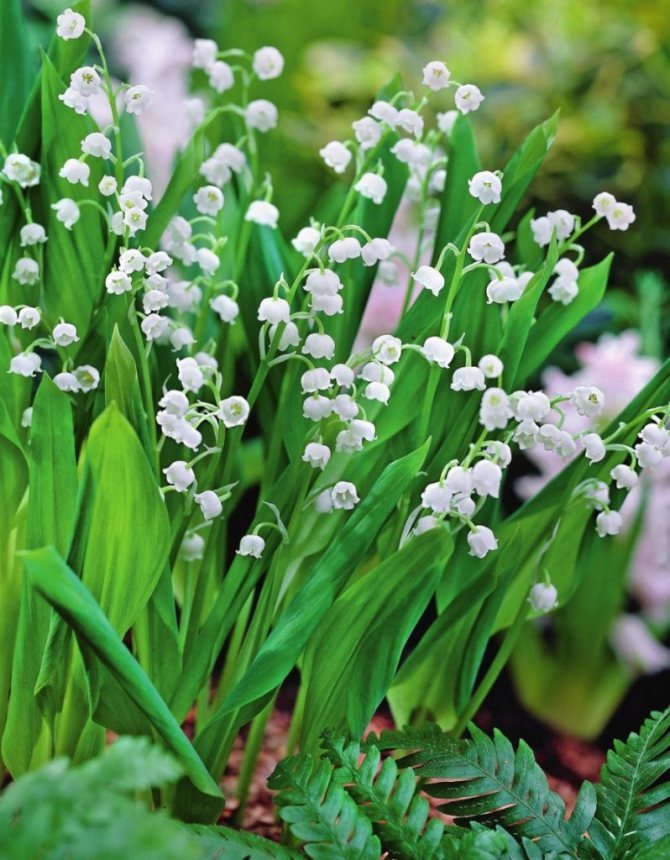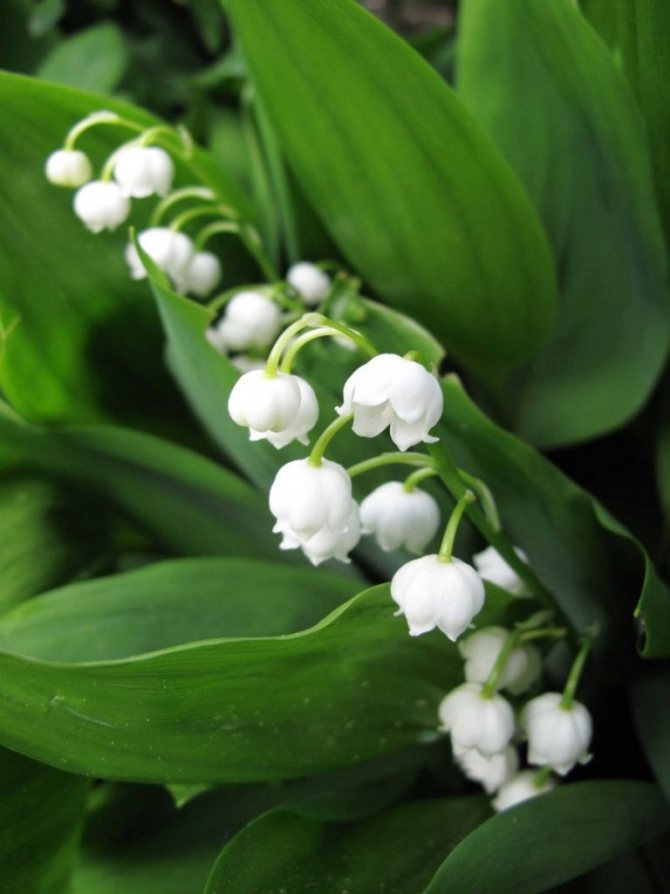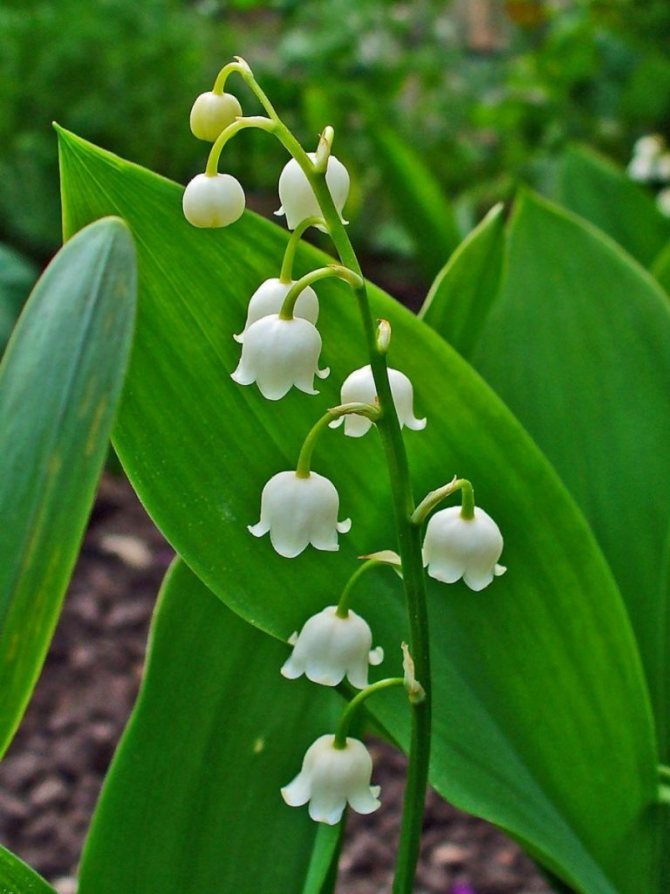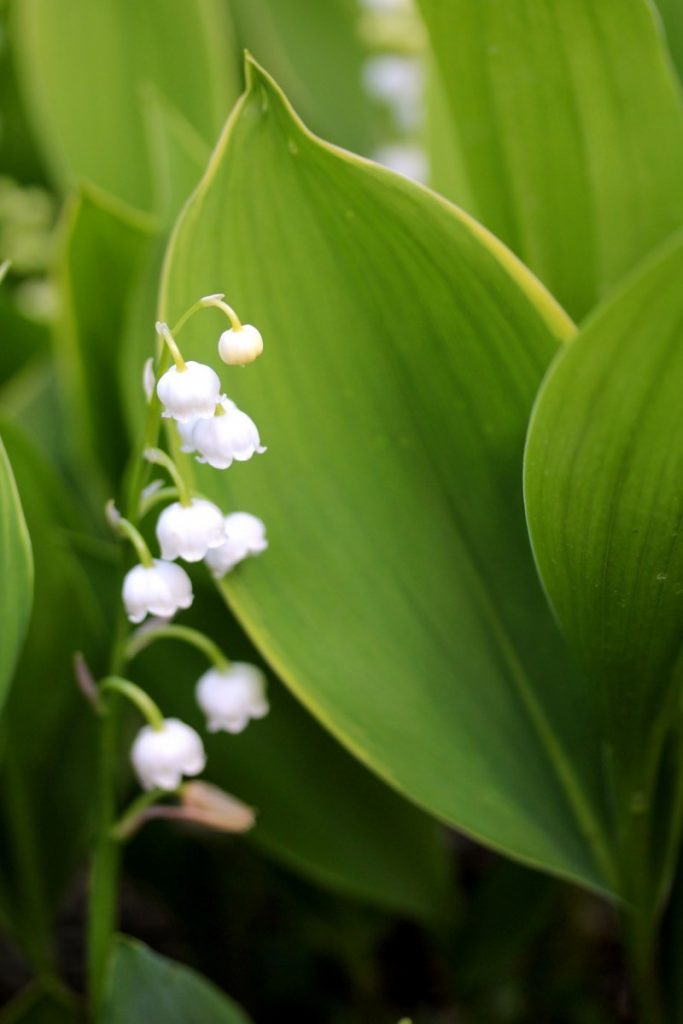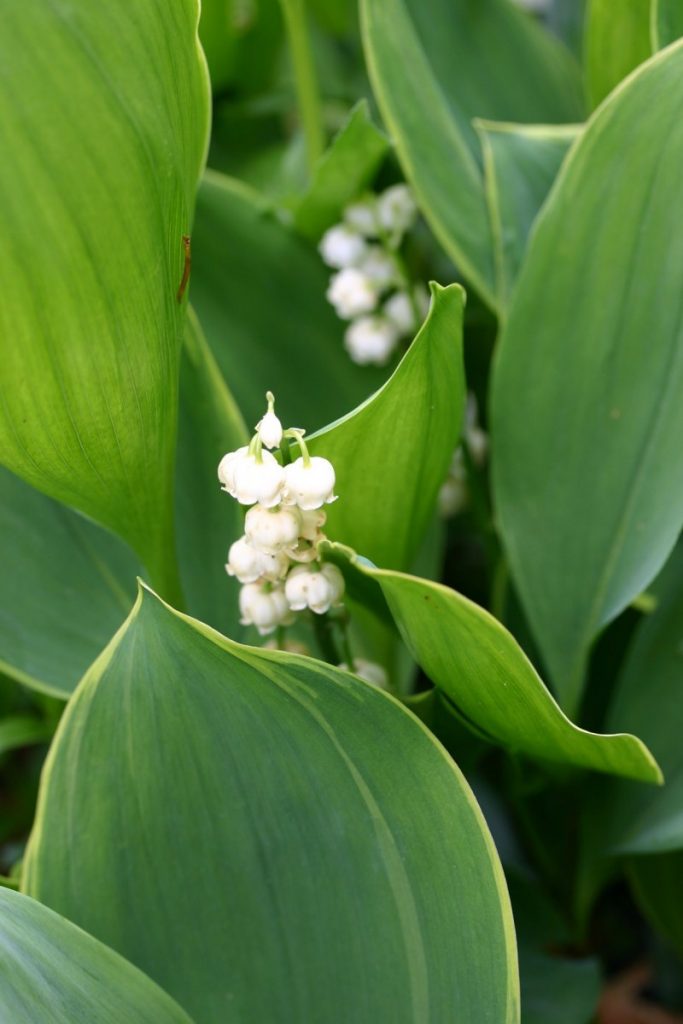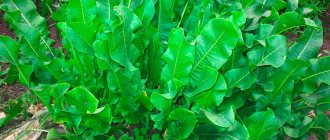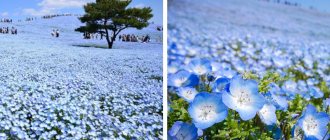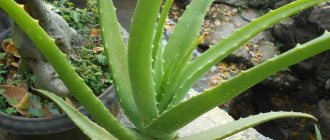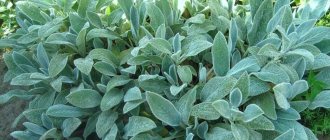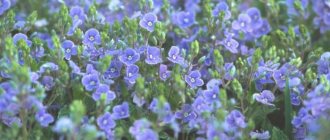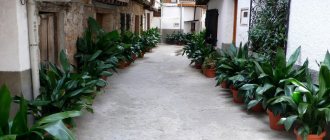Lilies of the valley are rare flowers listed in the Red Book. There are some interesting facts related to them. It has been established that even 2 thousand years ago, the Egyptians cultivated them all year round. They began to be cultivated in Europe in the 16th century, and in Russia in the 18th century. Before that, he was going exclusively for medical purposes (treatment of fever, epilepsy). In World War I, it was used as an antidote to gas attacks. Finland has chosen this flower as its symbol.
Herbaceous perennials are common in the temperate zone. Grows in shaded areas.
If the soil is well moistened, they form whole glades. Once in such a place, you involuntarily freeze from the unusual beauty and wonderful aroma. Because of their small buds and thin stalks, lilies of the valley are often called forest bells, maevka and rejuvenating flower.
Bouquets of these delicate inflorescences symbolize affection, love and gratitude.
Description of lily of the valley, what it looks like, photo
Lily of the valley is classified as a subfamily of the Nolinovs. The question of a more accurate classification is still controversial. Contrary to popular belief, there are several varieties. There are minimal differences and much in common between them.
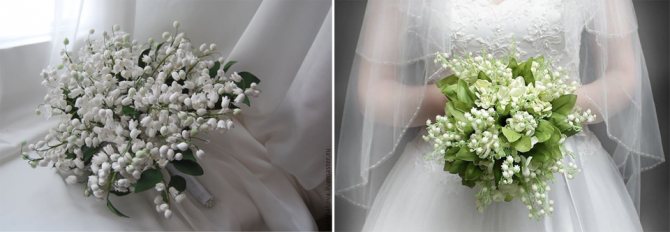
The root system is quite well developed. Thanks to the many small shoots, the plant receives the necessary trace elements and water. On the rhizome are the nodes from which the leaves grow. Outwardly, they resemble small olive and dark purple scales.
The first pair of leaves is formed from the top of the root. Flowering occurs once every 2-3 years. Corollas appear in plants that are at least 7 years old. The peduncle develops over several years. After that, the root system is divided into several parts, resulting in the formation of young plants.
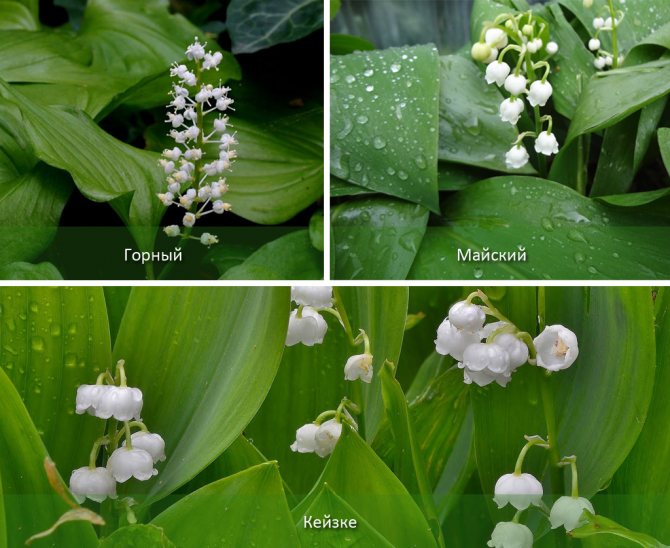

Perennial height usually does not exceed 30 cm. Aerial shoots do not differ in impressive length. The stem grows from the corner of the leaf that is below all the others.
A brush with small snow-white corollas is located on the flowering part. On one plant, you can find from 6 to 20 bell-shaped flowers. They are facing the same direction. Additional features include the presence of curved pedicels and denticles on the corolla.
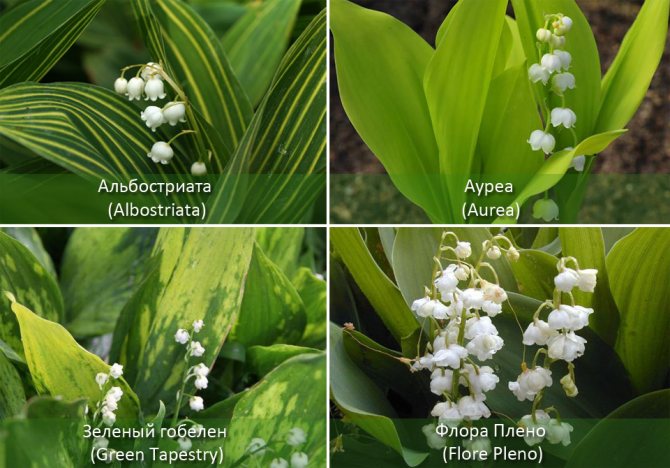

Fruits are round-shaped orange berries that appear after the plant has faded (in the first summer months). There is one or two seeds inside a kind of box.
New plants are obtained using seeds and rhizomes. Decorative varieties differ from wild ones in larger corollas. The rhizome is creeping in both cases. The shape of the flowers is drooping, with short stamens in the bells.
Lilies of the valley are poisonous, so extreme care must be taken when using them for various purposes.
Features of growing a plant
Location. In this regard, lilies of the valley are unpretentious. The main thing is to observe the level of shading of the plant. A shrub with little shade is ideal. In case of strong shade, the plant does not bloom strongly enough.
The soil. Must be well processed and nourished with organic produce. Lily of the valley is drought tolerant, but may flower poorly on unmoistened soil. In one area, lily of the valley can grow for no more than ten years.
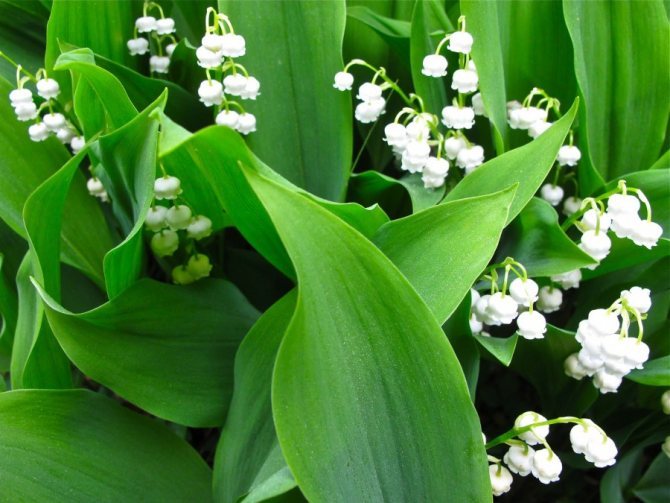

Care.For good flowering, lining of lilies of the valley with organic products is recommended: rotted manure or humus. Feeding with liquid organic matter and minerals is also necessary (the ideal month is August).
During the summer months, water should be added frequently in hot weather to avoid drying out the soil. The area where lilies of the valley are grown must be permanently in a loose state. There should be no weeds. Lilies of the valley are cold-resistant, so there is no need to cover them.
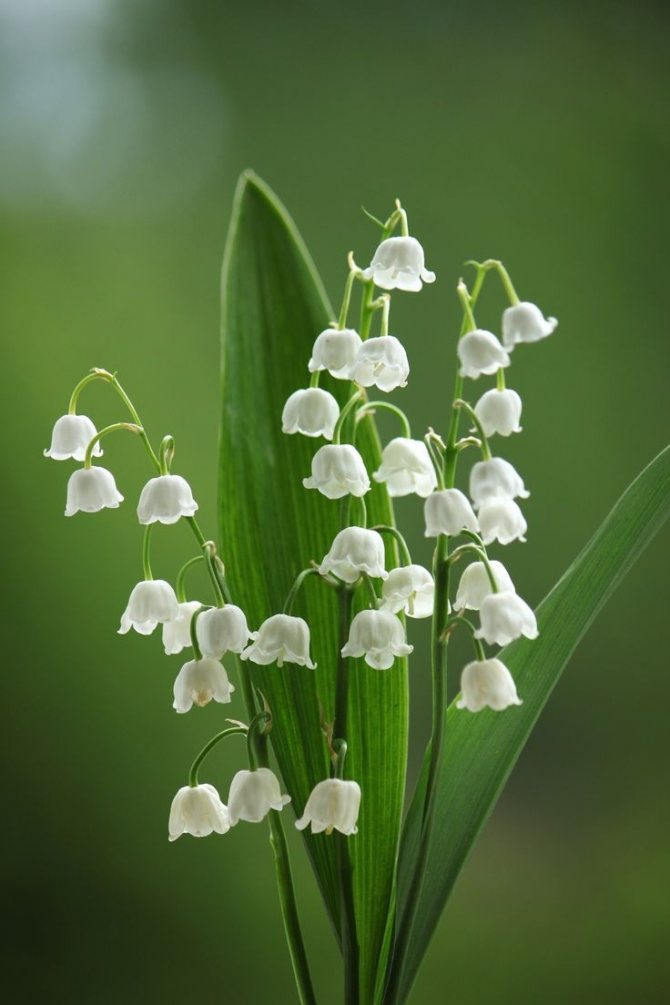

Temperature conditions. Frost resistant. Watering. Intense and regular. The soil must be constantly moistened. The plant loves moisture and does not tolerate overdrying.
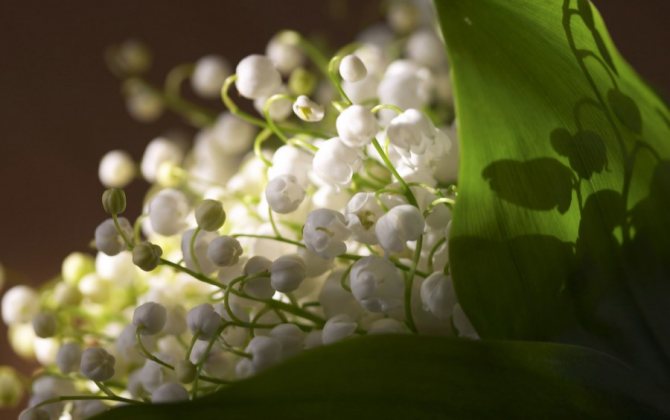

Transfer. Transplanting should be done only in the spring season and no more than twice a year. Appearance care. It is imperative to remove external damaged areas of the plant.
Types and varieties of lily of the valley: May and others
Researchers often argue about which category lilies of the valley belong to.
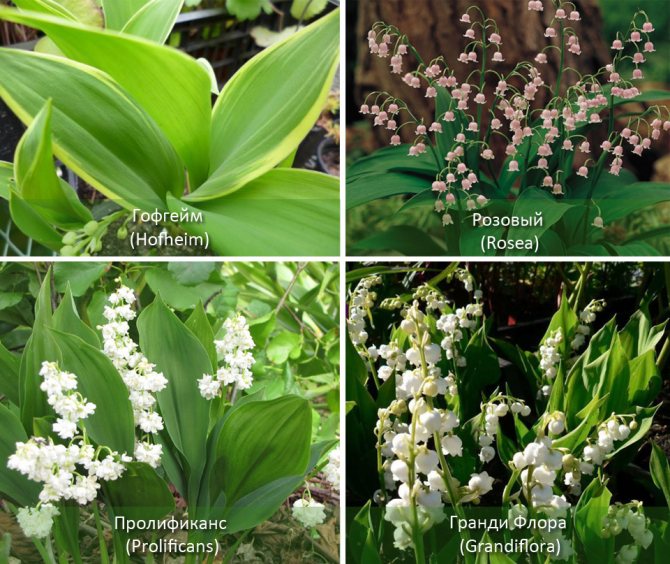

Some consider it to be of the same type. Others believe that they can be divided into several varieties, focusing on differences in structure and place of growth. The classification system will be as follows.
| View | Description | Leaves | Flowers |
| May | Grows on forest edges. The root system is horizontal. Height 30 cm. Lilies of the valley give a very pleasant aroma. Red-red fruits appear in autumn, their size does not exceed 9 mm. Flowering begins in May. These plants can be found in Europe, Transcaucasia, Russia. | Sharp. | Are on the footrest. There are teeth. The color of the corollas is white. |
| Mountain | It grows in the mountainous regions of North America. Short stem, branching rhizome. The fruits are reddish orange in color. Their diameter is 9 mm. | Length - 40 cm, width - about 4 cm. | The inflorescence consists of 5-15 broad-bell-shaped flowers. |
| Keiske | The distribution area includes North America, Siberia, Sakhalin. The plant has a low brown stem (about 20 cm), a developed fibrous rhizome. | Length - 15 cm. | Large buds, maximum 10 corollas. |
Breeders based on these varieties have created varieties:


| Variety | Features of the |
| Albostriata | There are decorative beige stripes on the leaves. |
| Aurea | Yellow leaf blades. |
| Flore Pleno | Plant height - 30 cm, there are 12 large terry corollas on the stem. The inflorescences are white. |
| Grandi Flora (Grandiflora) | It is characterized by the presence of large leaves. Emits an alluring aroma. |
| Green Tapestry | Leaf blades of a light green shade. |
| Hofheim | The leaves of this variety have a pale brown border. The inflorescences have a dazzling white tint. |
| Prolificans | The flowering period lasts 60 days. There are many small corollas on one flower. The plant is stunted. |
| Pink (Rosea) | It is characterized by an unusual pale pink color. There are 12 to 14 buds on the cyst. |
| Aurea variegata (Aureovariegata) | Longitudinal sandy stripes on the leaves. |
| Victor Ivanovich | Plant height - 50 cm. The inflorescence consists of large corollas. On the stem, you can find from 9 to 19 white buds. After the end of the flowering period (about 20 days), bright red berries appear. |
Short story
They are also popularly known as: konvalia, may and field lily, maevka, cheremka. The plants owe their name to the works of the outstanding botanist Karl Linnaeus. The literal translation of the flower is "lily growing in the valley."
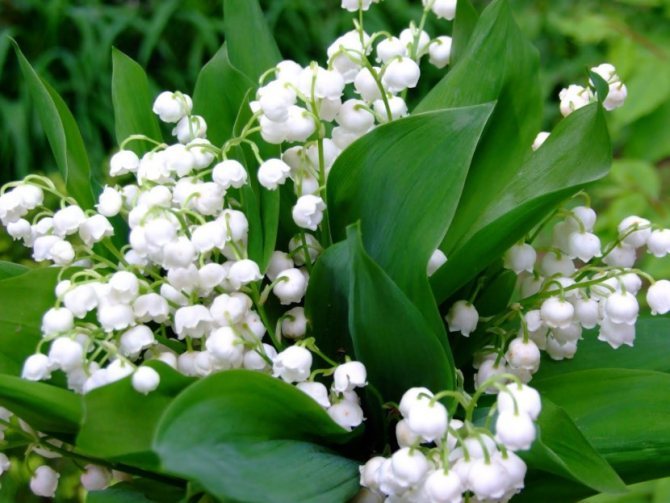

There are several origins. According to one of them, the name is borrowed from the Polish word "lanuszka" because of the similarity of the leaves with the ends of a wild fallow deer. In other words, it is the copulation of the two words "incense" and "breathe" because of the pungent and fragrant aroma.
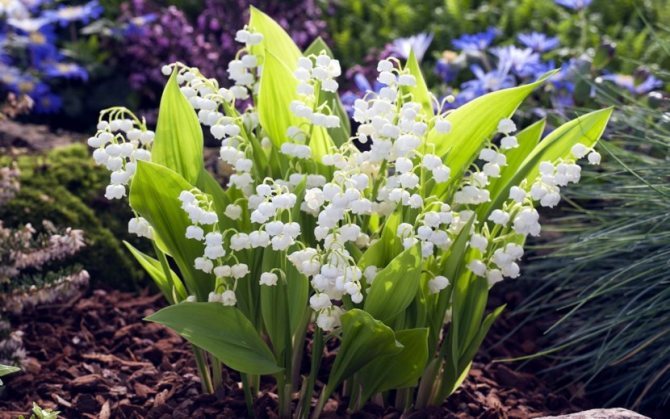

Lily of the valley is a forest perennial plant that grows in the Northern Hemisphere. Most commonly found in cool or humid locations.
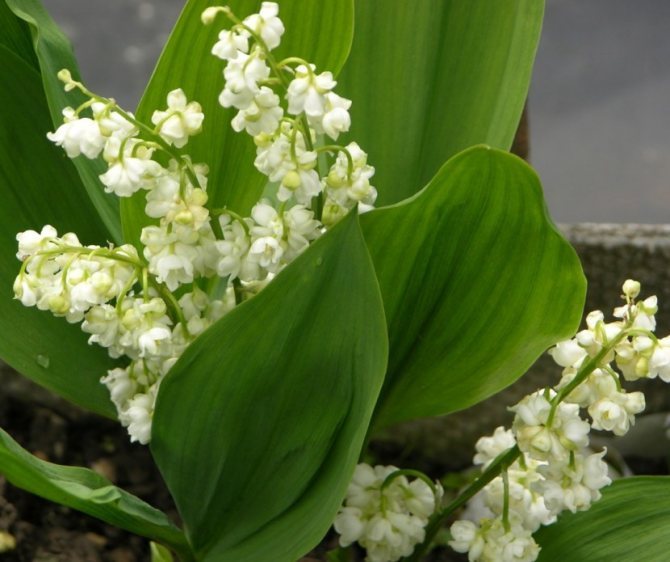

Walking through the forest, sometimes you can come across whole glades of lily of the valley leaves, but you can't see the bells themselves. The whole reason is that the maximum period of life of the rhizome is up to 21 years.
Planting and breeding lily of the valley
There is no need for special skills to plant a flower.
Location
The first step is the selection of a place. The soil must be neutral and fertile. Lilies of the valley love shade, so you should choose an area that is protected from direct sunlight.
The soil must first be plowed, organic and mineral fertilizers must be added to it.
Planting dates and methods for obtaining new lilies of the valley
Planting in open soil is carried out during the first two autumn months. For reproduction, rudiments or rhizomes with buds are used.
The prepared culture is planted in rows. Be sure to leave a gap between the bushes, which cannot be less than 9 cm.
The seeds are placed in the soil in the spring. The garden bed must be watered. The sprouts that appear are sprinkled with soil. The layer thickness should not exceed 2 cm.
Distillation
Carried out with garden varieties of lilies of the valley. Thus, they achieve their off-season flowering. Field varieties are not recommended to be experimented with. The stems harvested in the fall are placed in a container with sand. The parts of the plant are then placed vertically. In winter, the boxes should be insulated with, for example, straw.
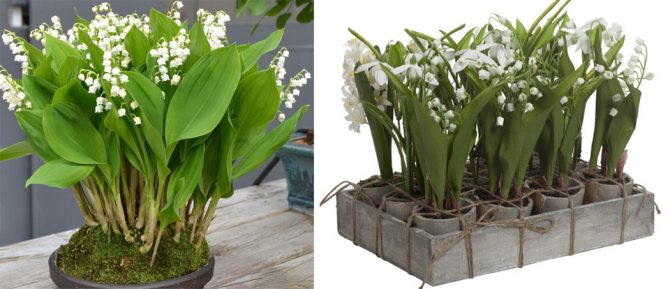

An obligatory step is the processing of lilies of the valley. It is carried out using wet cultures. For 3 weeks, the sprouts are kept at zero temperature (+/- 1 ° C). On the 22nd day, they are placed in warm water.
When forcing wild (field) grass, soil is poured into the box, into which organic fertilizers have been introduced. The kidneys must remain on the surface. After adding warm water, cover the soil with moss.
Watering flowers
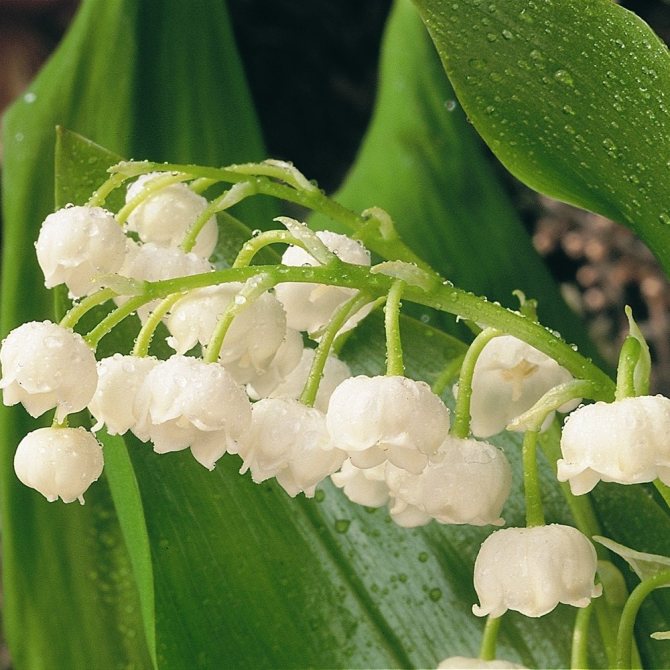

What does a lily of the valley flower look like? The photo is shown above. As for watering, in the hot season it is important to ensure that the soil in the flowerbed with lilies of the valley is constantly moist. From spring to autumn, watering lilies of the valley is the main condition for good and productive flower growth. If the summer is hot, then you will have to take serious care of watering, since the flowers absolutely do not tolerate dry soil. You can water the flowers with both drinking and industrial water. If you have a well in your yard and you take water from there for irrigation, then before you fill it you need to let it warm up to an average temperature.
Despite the fact that lilies of the valley are capable of displacing flowers from a flower bed, you cannot cope with weeds on your own. Weeds will pick up moisture, thereby impairing flower performance. In addition, weeds can contribute to the development of diseases.
Mr. Dachnik informs: useful properties of lily of the valley
Lily of the valley is widely used in medicine, cosmetology.
Medicine
The healing properties of these flowers are due to their composition. Plants contain cardiac glycosides, organic acids, micro- and macroelements. Medicines made on the basis of the extract have a positive effect on the liver, thyroid, central nervous system, and gastrointestinal tract.
With the correct use of the drugs, the work of the heart improves, the general condition is stabilized, the elimination of painful sensations and spasms, and the normalization of the water balance.
Lily of the valley is used in the treatment of viral and catarrhal pathologies. When preparing the medicine, the ground parts of the plant are used.
It should be noted that berries, rhizomes, modified shoots and seed material are poisonous.
Application in cosmetology
Lily of the valley oil is used to create cosmetics, by means of which:
- fight congestion;
- increase skin tone;
- strengthen the walls of blood vessels;
- stabilize microcirculation;
- cleanses the pores.
Thanks to their regular use, the skin becomes smooth and well-groomed, and the hair becomes shiny and elastic. On the basis of the essential composition, tonics, creams, masks for hair and face are made. This list can be supplemented with perfume compositions. They are distinguished by tenderness, sophistication and freshness.
Wolf's bast, Common wolfberry (Daphne)
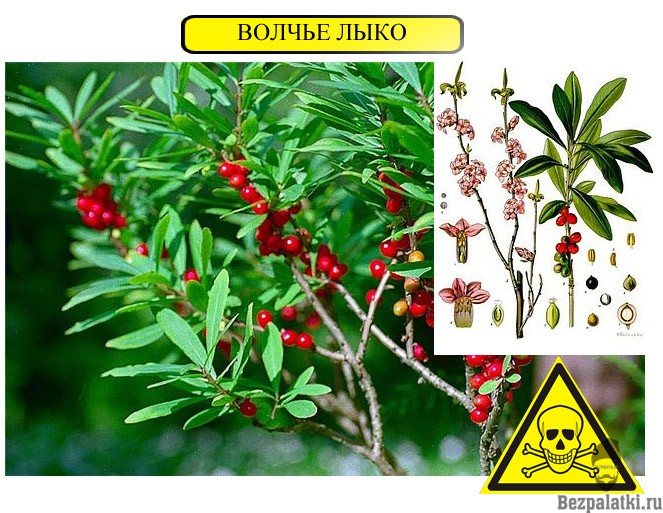

It is a shrub up to 1 meter high with fragrant flowers and very poisonous red berries. The flowers are small, like lilacs. Smelling wolfberry flowers is not worth it, because they cause a headache, and the smell really resembles lilacs. Berries are deadly poisonous, bears fruit in summer. Berries are red, inside a stone
This shrub has poisonous berries that ripen in August. The berries are oval, at first green, then turn red
Symptoms of wolf bast poisoning
after eating berries, there is a burning sensation in the mouth, pain in the acorn, nausea and vomiting, weakness throughout the body. Meserein, which is part of the berries, strongly irritates the skin and mucous membranes. Also in the berries there are coumarins that cause increased bleeding. Even touching these berries is very dangerous, and if the juice gets on the mucous membranes of the eyes, ulcers will appear on the cornea, which are very difficult to heal
Area
Lily of the valley is listed in the Red Book due to a sharp reduction in its distribution area. This spring flower is considered aggressive and can create entire colonies of fragrant bells, but picking just one flower can kill an entire colony. If you look superficially, you get the impression that lilies of the valley are growing everywhere, but in fact, the plant is inexorably disappearing. Deforestation and the construction of settlements in their place led to such a deplorable situation. The illiterate collection of lily of the valley flowers as a medicinal raw material also brought significant damage to the forest beauties. Flower lovers, planting lilies of the valley on their plots, get the delicate beauty of these plants in spring and at the same time save the endangered species.

